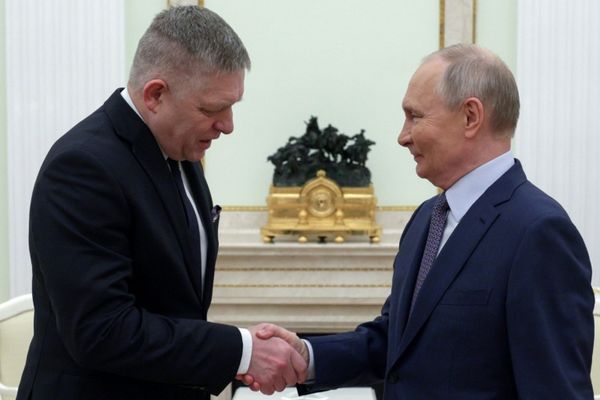
Sri Lanka’s prime minister has resigned to make way for a unity government that will try to find a way out of the country’s worst ever economic crisis but protesters say they also want his brother to stand down as president.
Prime Minister Mahinda Rajapaksa’s resignation came hours after clashes broke out in Colombo, where supporters of the ruling party stormed an anti-government protest camp and were beaten back by police using tear gas and water cannon.
Ruling party parliamentarian Amarakeerthi Athukorala died after a stand-off with anti-government protesters in the town of Nittambuwa near Colombo, a police source told Reuters without giving details.
At least three others were wounded and the area remained tense with dozens of protesters still at the location, the source said.
A country-wide curfew has been imposed, on top of the state of emergency that Sri Lankan President Gotabaya Rajapaksa – the prime minister’s younger brother, referred to as Gota – declared last week in the face of escalating protests.
The island country of 22 million people has suffered prolonged power cuts and shortages of essentials including fuel, cooking gas and medicines and the government is left with as little as $US50 million ($A72 million) of usable foreign reserves.
Sri Lankans have been taking to the streets in largely peaceful protests and demanding that the Rajapaksas step down.
In his resignation letter, a copy of which was seen by Reuters, the prime minister said he was quitting to help form an interim unity government.
“Multiple stakeholders have indicated the best solution to the present crisis is the formation of an interim all-party government,” the letter said.
“Therefore, I have tendered my resignation so the next steps can be taken in accordance with the constitution.”
Nalaka Godahewa, a government spokesman, said all cabinet members had also stepped down.
“Now the president will invite other political parties to form a unity government,” he told Reuters.
“The president will meet with independent and opposition political parties and we expect a new government in the next few days.”
On the streets of Colombo, the mood was jubilant but tense as cars – some flying the Sri Lankan flag and others sounding their horns – drove along a seaside promenade where clashes had broken out earlier.
Outside the prime minister’s residence, Osha De Silva was among the hundreds of protesters celebrating his resignation but said she also wanted the president to step down.
“The Rajapaksa regime is corrupt,” Silva said, clasping a flag with both hands.
The prime minister’s departure came during a day of chaos and violence, with pro- and anti-government protesters clashing for the first time since the unprecedented wave of demonstrations took hold in late March.
Some protesters hijacked a bus used to ferry pro-government supporters, according to a Reuters witness, one of several such incidents reported in Colombo.
Video footage from local media showed the ancestral home of the Rajapaksa family in the southern city of Hambantota ablaze while multiple attacks on houses and election offices of law makers were also reported.
Reuters could not immediately verify the footage.
Pro-government supporters were attacked in at least four locations as they were returning from Colombo, media reported.
The houses of at least two mayors were also set on fire, police sources told Reuters.
Hundreds of ruling party supporters had rallied outside the prime minister’s official residence before marching to an anti-government protest site outside the presidential office.
Police had formed a line ahead of time on the main road leading towards the site but did little to stop pro-government protesters from advancing, according to a Reuters witness.
Pro-government supporters, some armed with iron bars, attacked anti-government demonstrators at the “Gota Go Gama” tent village that sprang up last month and became the focal point of protests.
Police used tear gas and water cannon to break up the confrontation.
At least nine people were taken to Colombo’s National Hospital for treatment relating to injuries or tear gas inhalation, a hospital official said, declining to be identified.
Local media reported as many as 150 were injured throughout the day.
“Strongly condemn the violent acts taking place by those inciting & participating, irrespective of political allegiances,” President Rajapaksa said in a tweet.
“Violence won’t solve the current problems.”
As dusk fell on Colombo, thousands defied a curfew to rally at Gota Go Gama.
“Gota(baya) go home,” the crowd chanted.







